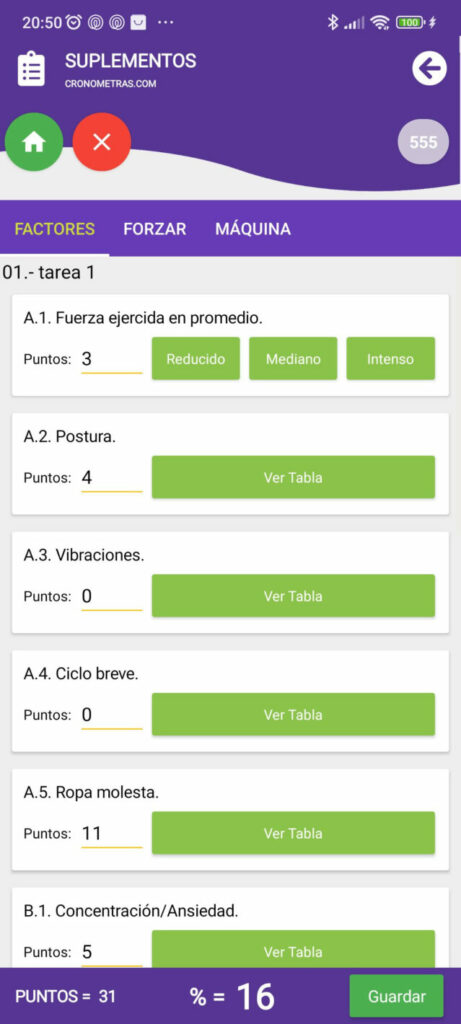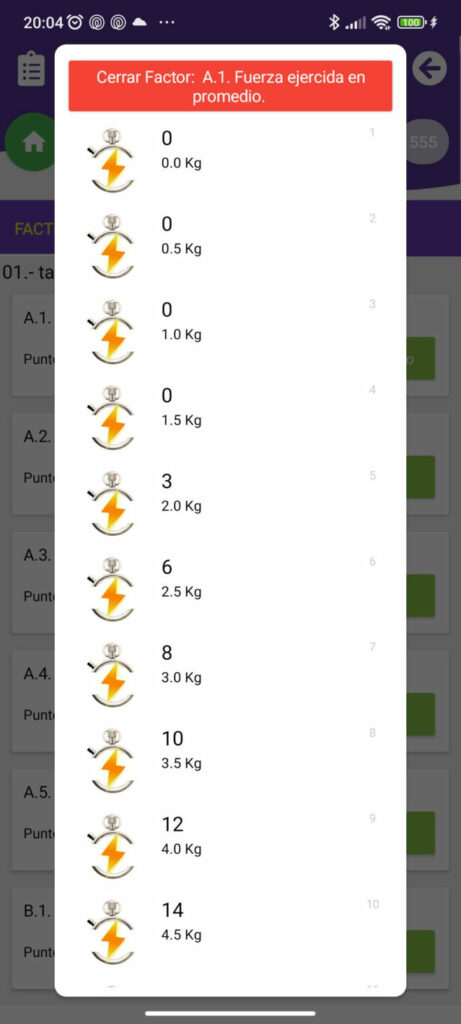Introduction
In today’s work environment, characterized by high demands and accelerated rhythms, the proper management of rest periods has become a crucial aspect for maintaining the well-being and performance of workers. Far from being a secondary aspect, breaks and rest periods during the workday play a fundamental role in preventing fatigue, promoting health, and improving productivity. In this article, we will explore the comprehensive approach proposed by the Technical Prevention Note (NTP) 916 of the National Institute of Safety and Hygiene at Work in Spain, complemented with the rest supplements suggested by the International Labour Organization (ILO).
Importance of Rest at Work
Rest is not a concept foreign to work, but is inherent to it. Both concepts complement each other in a harmonious and balanced way, since to maintain an optimal level of attention and performance, it is essential to introduce breaks at different frequencies and durations. These breaks allow for physical, mental, and emotional recovery, thus avoiding the accumulation of chronic fatigue and its negative consequences for both health and productivity.
NTP 916 highlights three essential components for the effectiveness of rest: the content of rest time, the frequency of breaks and their duration, and the quality of the rest space. Addressing these aspects comprehensively is fundamental to ensure that rest fulfills its function in a satisfactory and properly controlled manner.
Frequency and Duration of Breaks
NTP 916 recognizes that the evaluation of fatigue and the estimation of the frequency and duration of breaks should be done scientifically, considering factors such as physical effort, repetitive movements, work postures, mental load, shift and night work, exposure to noise, vibrations, heat and cold, and the use of display screens.
Technical Criteria and Specific Evaluation Methods
In this sense, the NTP provides a wide range of technical criteria and specific evaluation methods for different occupational risks.
Manual Handling of Loads
In the case of manual handling of loads, Royal Decree 487/1997 establishes the need to introduce breaks to reduce the risk involved in such handling. The Technical Guide of RD 487/1997 of the National Institute of Safety and Hygiene at Work recommends the convenience of adequate breaks, preferably flexible, as fixed and mandatory ones tend to be less effective in alleviating fatigue. Task rotation with changes in activities that do not involve great physical effort and that do not involve the use of the same muscle groups should also be considered.
Postural Fatigue
To avoid postural fatigue, alternating between sitting, standing, and walking is recommended, avoiding forced postures and movements and a low frequency of movements. UNE-EN 1005-4 evaluates work postures and movements in relation to machines and establishes risk limits based on the duration of the posture for each of the body segments. The Standard “ISO 11226:2000 - Ergonomics. Evaluation of static working postures” provides a detailed description of the procedure for determining postures and movements and their risk levels.
Repetitive Movements
Regarding repetitive movements, a task is repetitive when it is characterized by cycles, regardless of their duration, or when for more than 50% of the time the same work gesture or a sequence of gestures is performed. The OCRA Method (Occupational Repetitive Action) evaluates the risk of repetitive work of the upper extremity and associates the level of risk with the predictability of the appearance of a disorder in a given time. The method contemplates several aspects such as the Recovery Factor (RF) and the Duration Factor (DF).
Mental Load
To estimate breaks with greater rigor in the face of mental load, it is necessary to apply specific methods such as the NASA TLX Method. As a general criterion, short breaks of about 5 or 10 minutes should be taken every hour and a half of intensive effort.
Shift Work and Night Work
In the case of shift work and night work, the Standard UNE-EN ISO 10075 -2 “Ergonomic principles related to mental workload. Part 2: Design principle” contemplates that the duration of the workday should be adjusted to the workload, breaks can be introduced to prevent the onset of fatigue, and brief rests after short work periods are preferable to long rests after prolonged work periods. It also specifies that it is convenient for night shifts to have shorter work periods than day shifts.
Noise and Vibrations
Regarding noise and vibrations, both noise and vibrations generated by work equipment are generators of considerable fatigue, so it is necessary to scrupulously follow what is established in the regulations regarding maximum levels of occupational exposure and enjoy rest periods developing other activities in places completely separated from the sources of risk.
Exposure to Heat or Cold
In extreme situations of exposure to heat or cold, there are methods for evaluating the risk of thermal stress that allow estimating the maximum exposure time to extreme situations and consequently the rest times. In such cases, given the necessary acclimatization of the body in the rest period, rebalancing the generated metabolic consumption, work that represents considerable physical efforts should not be assigned.
ILO Supplements
Complementing these technical criteria, the ILO, in its publication “Introduction to Work Study,” proposes a system for calculating time supplements based on the assignment of points according to different sources of physical and mental tension present in working conditions. These supplements allow estimating the additional time necessary for the recovery of fatigue based on the level of effort required and the working conditions.
Some of the factors considered are: the muscular effort required, forced postures, repetitive movements, visual load, necessary mental concentration, noise, vibrations, extreme temperatures, and other adverse environmental agents.
Depending on the score obtained, additional time percentages are established that should be allocated to breaks and rest during the workday. These recovery periods are fundamental to prevent the accumulation of fatigue, allow physical and mental recovery, and maintain optimal levels of performance and work well-being.
The ILO emphasizes that the introduction of adequate breaks should not be seen as unproductive time, but as an essential preventive measure to safeguard the health of workers and facilitate efficient and sustainable performance over time. In addition, it recommends that breaks be brief and frequent, rather than long and scarce, to maximize their effectiveness.
In summary, the rest supplements proposed by the ILO are a technical tool internationally endorsed for the ergonomic management of work time. Their application contributes to creating healthier working conditions, preventing risks derived from fatigue, and promoting productivity through an adequate balance between work and recovery periods.
From the CronometrasApp industrial time study app at cronometras.com, these supplements can be established in an agile and simple way, selecting the real work situation for each of the situations.



Quality of Rest Space
In addition to the frequency and duration of breaks, NTP 917 emphasizes the importance of the quality of the rest space. An adequate and comfortable environment contributes significantly to the effectiveness of rest and the recovery of accumulated fatigue.
NTP 917 highlights that rest places should not be treated independently of the type of work activity. On the contrary, they should be carefully conceived, taking into account the dignity of the work and those who execute it, as well as the needs of productivity.
The creation of spaces that allow physical and mental relaxation, away from work environments with exposure to risks such as noise, extreme temperatures, or isolation, is recommended. In addition, the possibility of offering different types of spaces to adapt to the individual needs of workers is suggested, whether active breaks with physical exercise or more sedentary breaks with intellectual or leisure activities.
Organizational and Cultural Aspects
NTP 916 recognizes that the effectiveness of rest not only depends on technical aspects, but also on organizational and cultural factors within companies. It is fundamental to promote a culture that values the importance of rest and recovery, eliminating the erroneous perception that time dedicated to breaks is unproductive.
In this sense, the need to involve workers and their representatives in the planning and organization of rest periods is highlighted. In addition, it is recommended to provide autonomy and flexibility to workers so they can self-regulate their rest times according to the demands and rhythms of work.
Conclusions
The effective management of rest periods at work is a fundamental aspect to guarantee the well-being, health, and optimal performance of workers. NTP 916 of the National Institute of Safety and Hygiene at Work in Spain offers a comprehensive approach that encompasses the frequency and duration of breaks, the quality of rest spaces, and the organizational and cultural aspects related to this practice.
Complementing this approach, the rest supplements proposed by the International Labour Organization provide a technically endorsed international tool for calculating the recovery times necessary based on working conditions and the efforts required.
The proper implementation of these principles and technical criteria contributes to creating healthier work environments, preventing risks derived from fatigue, promoting productivity, and fostering an organizational culture that values and respects the importance of rest as an integral part of work.
In summary, the effective management of rest periods is not a luxury, but a necessity to guarantee the well-being and sustainable performance of workers, as well as the competitiveness and productivity of organizations in the long term.